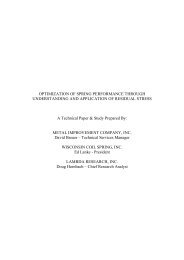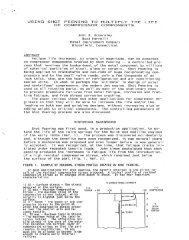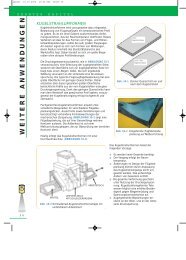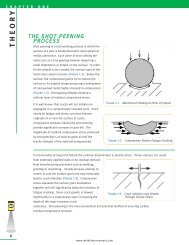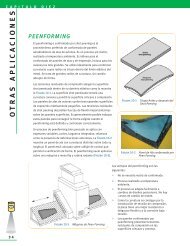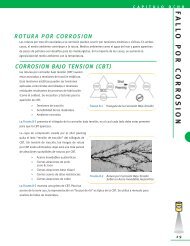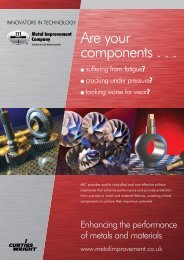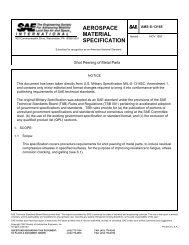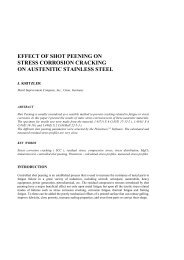MIC Green Book
MIC Green Book
MIC Green Book
You also want an ePaper? Increase the reach of your titles
YUMPU automatically turns print PDFs into web optimized ePapers that Google loves.
C H A P T E R O N E<br />
THEOR Y<br />
4<br />
THE SHOT PEENING PROCESS<br />
Shot peening is a cold working process in which the<br />
surface of a part is bombarded with small spherical<br />
media called shot. Each piece of shot striking the<br />
metal acts as a tiny peening hammer imparting a<br />
small indentation or dimple on the surface. In order<br />
for the dimple to be created, the surface layer of the<br />
metal must yield in tension (Figure 1-1). Below the<br />
surface, the compressed grains try to restore the<br />
surface to its original shape producing a hemisphere<br />
of cold-worked metal highly stressed in compression<br />
(Figure 1-2). Overlapping dimples develop a<br />
uniform layer of residual compressive stress.<br />
It is well known that cracks will not initiate nor<br />
propagate in a compressively stressed zone.<br />
Because nearly all fatigue and stress corrosion<br />
failures originate at or near the surface of a part,<br />
compressive stresses induced by shot peening<br />
provide significant increases in part life. The<br />
magnitude of residual compressive stress produced<br />
by shot peening is at least as great as half the<br />
tensile strength of the material being peened.<br />
In most modes of long term failure the common<br />
denominator is tensile stress. These stresses can<br />
result from externally applied loads or be residual<br />
stresses from manufacturing processes such as<br />
welding, grinding or machining. Tensile stresses<br />
attempt to stretch or pull the surface apart and may<br />
eventually lead to crack initiation (Figure 1-3).<br />
Compressive stress squeezes the surface grain<br />
boundaries together and will significantly delay the<br />
initiation of fatigue cracking. Because crack growth<br />
is slowed significantly in a compressive layer,<br />
increasing the depth of this layer increases crack<br />
resistance. Shot peening is the most economical<br />
and practical method of ensuring surface<br />
residual compressive stresses.<br />
www.metalimprovement.com<br />
Dimple<br />
Impact at high speed<br />
creates a dimple<br />
Dimple<br />
Figure 1-1 Mechanical Yielding at Point of Impact<br />
Stretched Surface<br />
COMPRESSION<br />
Stretched Surface<br />
COMPRESSION<br />
Impact at high speed<br />
creates a dimple<br />
Figure 1-2 Compression Resists Fatigue Cracking<br />
Figure 1-3 Crack Initiation and Growth<br />
Through Tensile Stress



